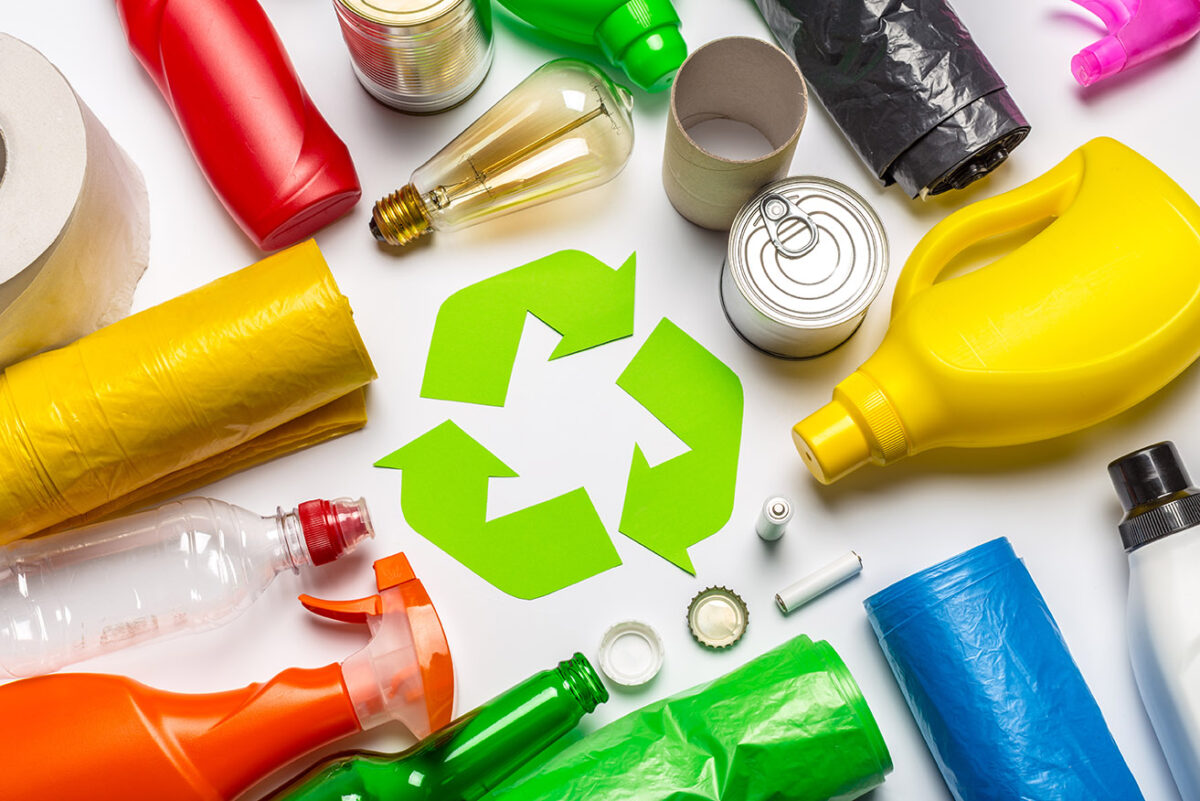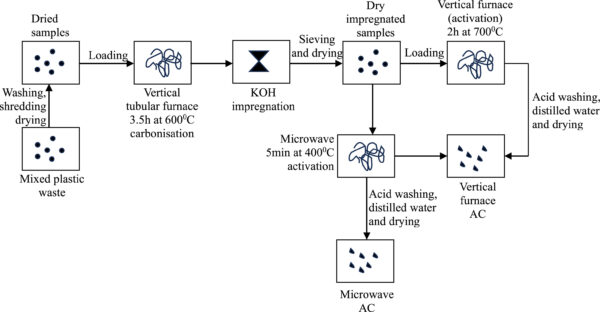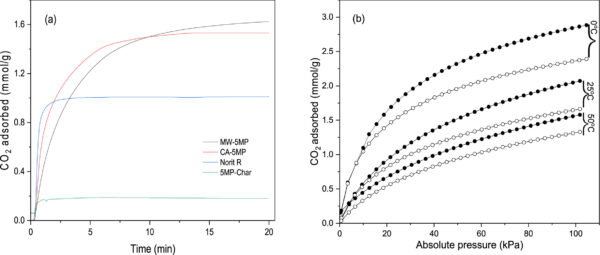Capturing CO₂ with Recycled Household Plastics

Mixed plastic waste can be transformed into activated carbon through microwave pyrolysis, improving CO₂ capture and recycling efficiency.
Pyrolysis, a process that converts plastics to valuable products, produces a solid char. This char is a precursor to develop activated carbons (AC), which can remove a wide variety of environmental contaminants. Studies have shown success in developing plastic-waste derived ACs from polyethylene terephthalate (PET) and polystyrene (PS). During the recycling of plastics, separation and sorting materials is complex and can be expensive. Household waste includes many types of plastics. Developing porous carbons for CO2 capture from mixed plastics could make this process more accessible.
You can also read: Carbon Capture in Plastics Manufacturing.
Mixed Waste, Mixed AC Feasibility
Pure plastic wastes, such as low- and high-density polyethylene (LDPE, HDPE) and polypropylene (PP) cannot produce ACs. During their carbonization, these materials only produce oils and gases, with no recovered char. These materials make up a sizable portion of real household plastic waste.
Preparing Waste Samples
In an experiment to assess the effectiveness of AC from real household waste, researchers sourced common waste materials. Polyethylene bags (LDPE), milk containers (HDPE), food wrappings (PP), packaging foam (PS), and plastic bottles comprised the household waste sample. Material preparation included dissolving the PS foam to remove air bubbles and cutting the other plastics into small pieces. The researchers mixed the plastics, then subjected them to high temperatures in a vertical tubular furnace, producing the char. The researchers used both conventional thermally assisted chemical activation and microwave-assisted activation to produce ACs. Potassium hydroxide (KOH) was the activator used in this process.

Researchers prepared the samples, then used two different methods of preparing the ACs to compare their effectiveness. Image courtesy of Household mixed plastic waste derived adsorbents for CO2 capture: A feasibility study.
After rigorous testing, both chars performed well, but microwave activation required less energy. Microwave activation required a shorter activation time and lower activation temperature, and thus, required 5x less energy than conventional activation. Plotted thermogravimetric curves of both chars suggest that the microwave-activated samples exhibited smaller micropore width. Since micropore size highly influences CO2 uptake, this difference in width is significant for effectiveness.

Microwave-activated samples presented a higher CO2 uptake capacity than conventionally-activated samples. Image courtesy of Household mixed plastic waste derived adsorbents for CO2 capture: A feasibility study.
Costs and Scalability: Pathway to Commercial Adoption
For any recycling strategy to succeed, it must also be cost-effective. Therefore, the study included a detailed cost analysis for producing activated carbons from mixed household plastics at laboratory scale. The results were as follows:
| Activation Method | Cost per Equivalent AC Amount |
|---|---|
| Conventional Activation | £4.85 |
| Microwave Activation | £4.22 |
While these costs currently exceed the commercial price of activated carbon derived from crop residues (£2.25), the researchers attribute this difference primarily to higher electricity costs in the United Kingdom. As production scales up and energy costs stabilize, the economic gap is expected to narrow considerably.
Toward a Circular and Low-Carbon Future
This approach demonstrates strong potential for commercial-scale application. By integrating mixed-plastic recycling with CO₂ capture technology, this process could transform household plastic waste into valuable environmental materials.
Ultimately, microwave-assisted activation not only improves energy efficiency but also enhances carbon adsorption performance, paving the way for accessible, scalable, and sustainable waste-to-carbon solutions that contribute to both plastic circularity and carbon mitigation goals.
